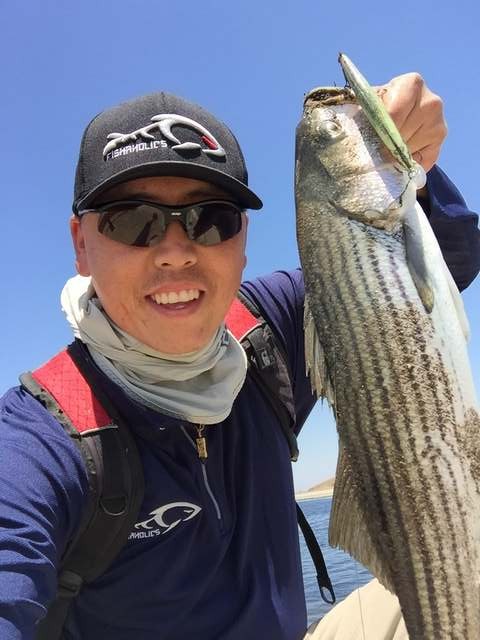California Aqueduct Fishing refers to the activity of fishing in the California Aqueduct system. Anglers target species like striped bass within this water network.
The California Aqueduct, a critical component of the State Water Project, offers unique fishing opportunities throughout hundreds of miles of channels. This vast network of waterways transports water from the wetter northern part of the state to the arid south.
Fishing in the aqueduct is popular due to its accessibility and the variety of fish species available, including catfish and largemouth bass. With its well-maintained access points, the aqueduct appeals to both novice and experienced fishermen. Rules and regulations are in place to ensure the sustainability of the fish population and must be followed by all who wish to cast their lines in these waters.

Credit: kmph.com
California’s Aqueduct System
The California Aqueduct is a key player in state water management. Spanning over 400 miles, it’s a massive channel for water transport. Infrastructure includes canals, tunnels, and pumping stations to shift water statewide. Enormous pumps lift water over hills and valleys, ensuring flow from North to South.
| Feature | Description |
|---|---|
| Length | About 400 Miles |
| Starting Point | Sacramento-San Joaquin Delta |
| Ending Point | Southern California |
| Components | Canals, Tunnels, Pump Stations |
| Main Function | Water Transportation |

Credit: m.youtube.com
History Of Aqueduct Fishing
The origins of aqueduct fishing in California trace back to a leisure pursuit. Folks started catching fish for fun from the flowing waters. The sport used the large canals built to move water across the land.
Over time, the popularity of aqueduct fishing grew. It became a well-loved hobby among Californians. Families and friends would often gather along the canals. They spent time together while enjoying the outdoor experience.
Fishing techniques also changed as the years went by. People learned to catch more and different types of fish. From simple poles to advanced gear, the tools got better. These changes show the evolution of aqueduct fishing.
Species Thriving In The Aqueduct
The California Aqueduct serves as a home to a variety of fish species. Anglers often catch striped bass, one of the most sought-after fishes. Other Common fish types include catfish and carp, which thrive in the slow-moving waters of the aqueduct. Let’s not forget the largemouth bass, which also provides a great fight for fishers.
Seasonal changes greatly affect the types and numbers of fish. The cooler months bring about more active fish, with a higher possibility of catching larger striper. As the waters warm up, you might find more catfish and carp, especially during the hot summer months. It is crucial for anglers to note these variations to plan their fishing trips accordingly.

Credit: fishsniffer.com
Fishing Techniques And Tips
Successful California Aqueduct Fishing hinges on knowing the locale and adapting your techniques. Anglers often find that patience and observation lead to the best catches. Light tackle is generally recommended; it provides ample sensitivity for detecting bites in the flowing waters. Opt for lures that mimic local forage, or live baits such as worms and minnows for better attraction.
Night fishing can be particularly rewarding, as many species are more active and less wary after dark. A strong headlamp and reflective gear will keep you safe. Remember to check weather conditions and water levels before heading out, as these can impact fish behavior and safety.
Legal And Environmental Considerations
California Aqueduct fishing requires specific licenses and adherence to regulations. Anglers aged 16 and older must have a valid fishing license. This is crucial for fish population management and resource protection. Anglers need to follow season-specific catch limits and size requirements. These rules help sustain fish populations. Ignorance of these regulations can lead to fines and legal action.
Conservation efforts ensure a balance in the aquatic ecosystem. Responsible fishing practices include catch and release and using non-toxic gear. These efforts reduce negative impacts on wildlife. They also promote water quality and habitat health. The California Aqueduct is home to many fish species. Their survival connects to the environment’s overall well-being. Successful conservation strategies require public cooperation and education.
Hotspots And Access Points
California Aqueduct fishing lures anglers with its unique spots.
The Antelope Valley area brims with fish varieties.
Enthusiasts often gather at The Cross Creek for its accessibility.
Webb Tract brings in crowds for its teeming fish populations.
Discovering entry points can be tricky, but public maps help.
Local bait shops share advice on the best spots.
State regulations need a read before you start.
Signs mark public access spots along the waterway.
Frequently Asked Questions For What Is California Aqueduct Fishing
What Kind Of Fish Are In The California Aqueduct?
The California Aqueduct is home to species such as Striped Bass, Catfish, Carp, and Bluegill. Anglers also catch Largemouth Bass in this waterway.
Is It Legal To Fish The California Aqueduct?
Yes, fishing in the California Aqueduct is legal, but you must have a valid California fishing license and follow all state fishing regulations.
What Is The Main Purpose Of The California Aqueduct?
The main purpose of the California Aqueduct is to transport water from Northern California to Southern California regions.
How Deep Is The California Aqueduct?
The California Aqueduct’s depth varies, averaging approximately 30 feet deep, with certain sections reaching up to 32 feet.
Conclusion
Exploring the California Aqueduct offers a unique angling experience away from crowded coastlines. With the right gear and knowledge, you can enjoy a rewarding day of fishing in these waters. Remember, respecting the environment ensures this spot remains a fishing haven for years to come.
Cast out and savor the adventure!

Tony is a professional fishing instructor, and his hobby is fishing! He has been fishing for the last four years, and he loves the fishing instructor profession. Based on his experiences with different types of fishing, he shares his opinion about various fishing techniques so that a beginner can get started right away. Find him on Twitter. Happy reading!

